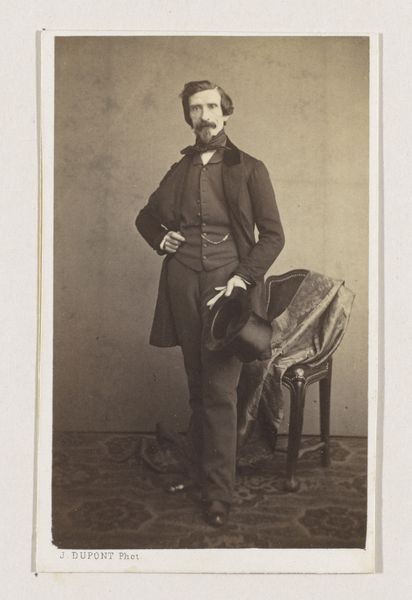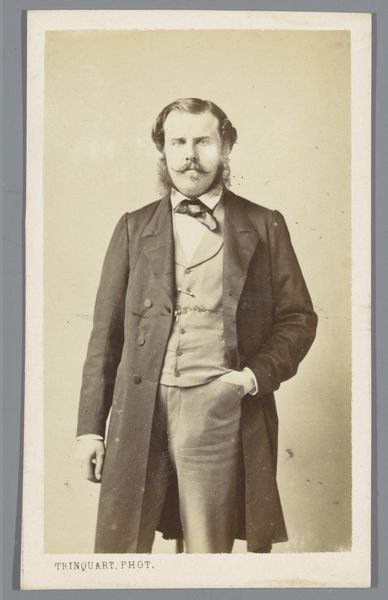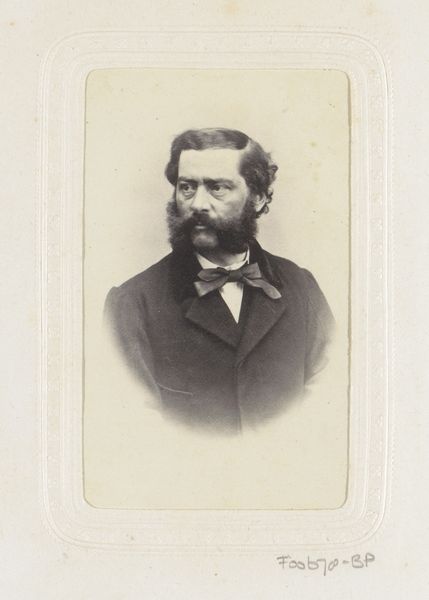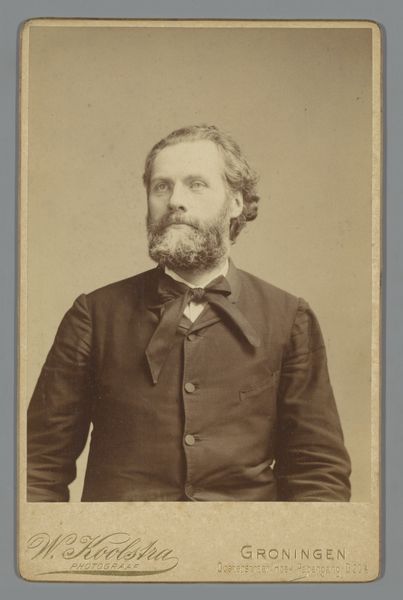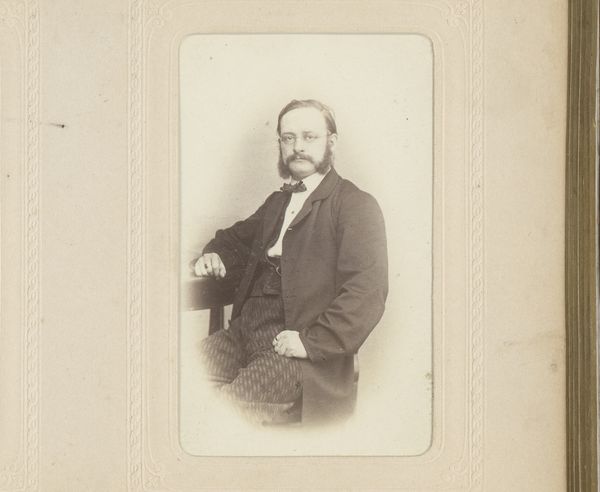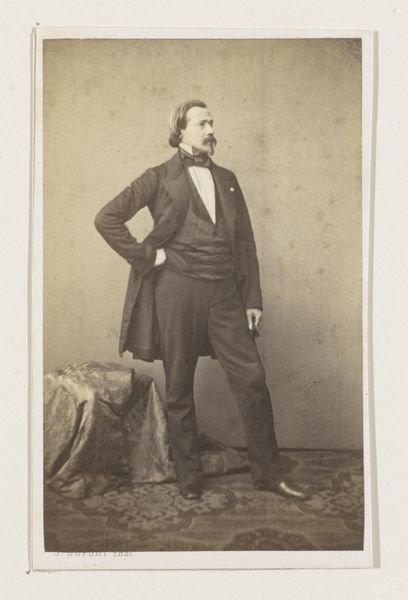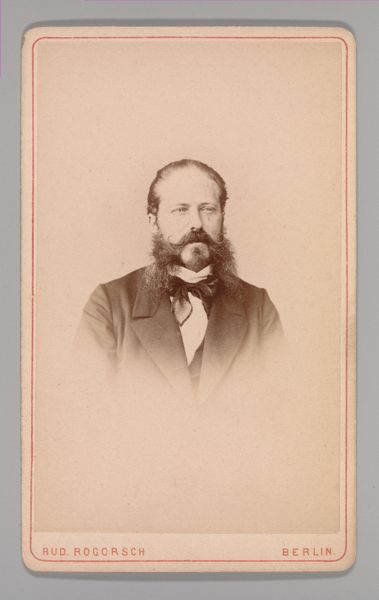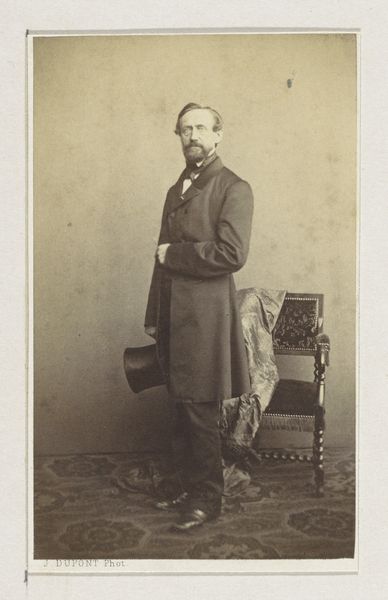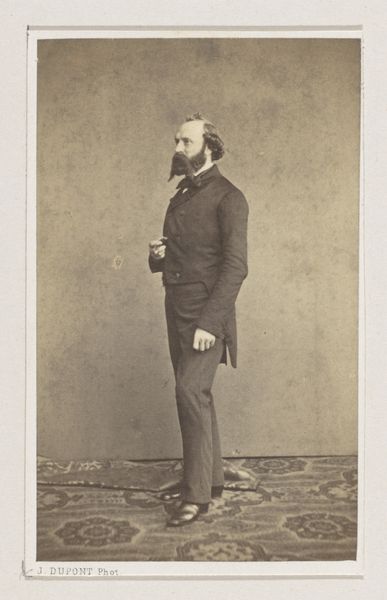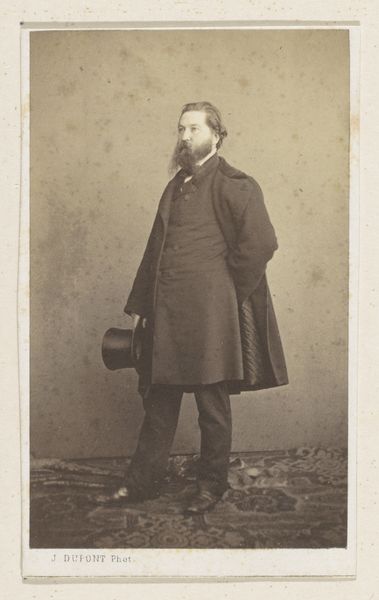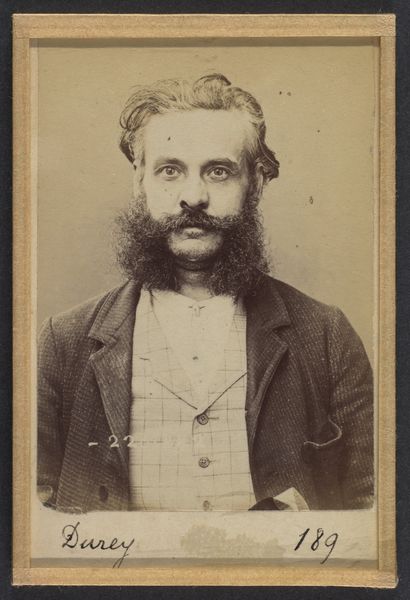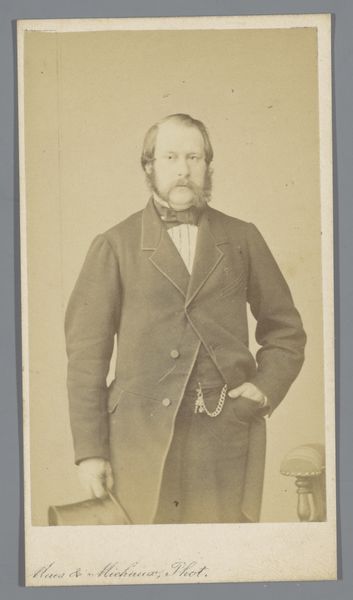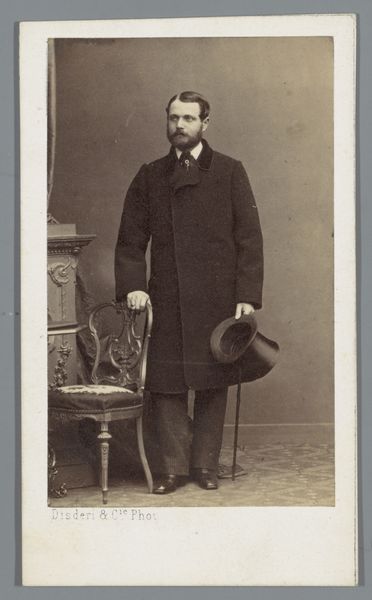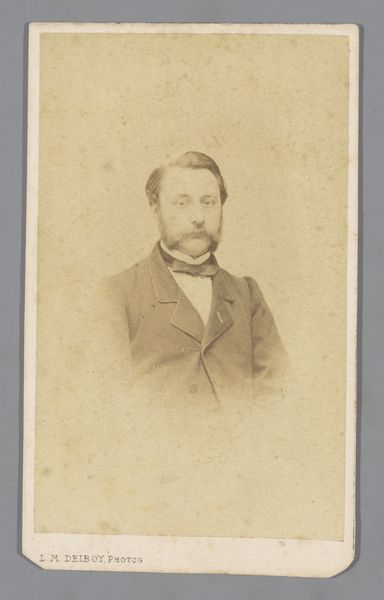
daguerreotype, photography
#
portrait
#
daguerreotype
#
photography
Dimensions: 3 11/16 x 2 1/8 in. (9.37 x 5.4 cm) (image)3 3/4 x 2 3/8 in. (9.53 x 6.03 cm) (mount)
Copyright: Public Domain
Jeremiah Gurney made this photographic portrait of Johann Strauss sometime in the mid-19th century. This image captures Strauss at the height of his fame, reflecting the rising status of musicians in European society. Consider the photographic medium itself. The rise of photography democratized portraiture. Previously, only the wealthy could afford painted portraits. Photography allowed a wider range of people to be represented. This portrait helped solidify Strauss’s image as a cultural icon. His dress, a dark suit, bow tie and decoration suggest the trappings of wealth. Strauss's music, particularly his waltzes, captured the spirit of Vienna. They spoke to a desire for pleasure and escape. In the context of social and political change in Europe, such as the rise of nationalism and industrialization, art became a powerful tool for shaping national identity. By studying the circulation of Strauss’s image, the history of photography, and the musical culture of 19th-century Europe, we can understand the complex interplay between art, society, and the individual.
Comments
No comments
Be the first to comment and join the conversation on the ultimate creative platform.
